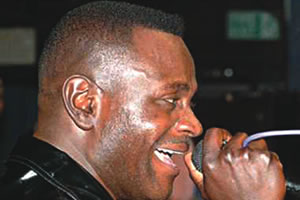Jah Prayzah rides high after Gwara album release

The album “Hokoyo” was still going strong when Mukudzei Mukombe, popularly known as Jah Prayzah, decided to release a 16 -track album “Gwara” early this month.
Arguments will rage on about the timing of the release, but there is no doubt that “Gwara” has already found favour with his legions of fans, with some songs attaining anthemic status, barely weeks after hitting the streets.
A section of his fans who had grown accustomed to fast paced beat in most of his song, might find the album moribund and slow from the usual pulsating beat.
However, most of his music fans are revelling in “Gwara”, which is a cohesive, inspirational and soulful project that consolidates the musical journey Jah Prayzah has walked through to date.
Already a topical discussion among his fans, critics and perennial over-the fence audience, “Gwara” is a well sequenced solid musical project, which is a clear exhibition of the musician’s lyrical finesse and his grip on fusing modern and traditional instruments, without losing the message.
“Gwara”, Jah Prayzah’s 11th album, centres on distinct themes that have carried his work for more than a decade – love, spirituality, social issues, love and celebration of life.
The album blends various music genres, contemporary beat, rhumba flair and his traditional beat, where he fuses mbira with modern instruments.
Unlike his previous album, “Hokoyo”, in “Gwara”, Jah Prayzah might have wanted his music to have presence, to seep into what is happening, and be able to be listened to as timeless artwork, interesting in itself and worthy of attention.
This probably explains why he came out with a sequel of four songs-dubbed “Nhoroondo”. A set of four narrative and sentimental tracks accompanied with videos, the tracks are slow, meditative, but striking to the core, societal challenges that include poverty, inheritance issues, which confronts the nation daily.
The album starts with the track “Bvumbamirai”, where the crooner calls for spiritual guidance, as he sojourns to look for earthly riches, which are proving to be elusive.
The follow up track, “Takarasima”, is a love ballad, where a man persuades his lover to leave her family and go yonder, in anticipation of a better life, with promises to love each other till death.
“Murder”, the third track is a club banger likely to find favour with party goers, who over the years have endeared themselves with the crooner.
Featuring a number of familiar faces, Van Choga and DJ Fantan, the song is not lyrically-rich, but it’s a track that will get everyone on the dance floor, at any given time. It is likely to be popular with music fans that to this day, still dance to “Eriza”, “Donhodzo”, “Chinamire” and “Porovhoka”.
Never the one to be shy away from love, Jah Prayzah reinforces the importance of love when he tells a story of a beautiful lady, whom he yearns for in the song, “Nyeredzi”. Hinged on powerful love lyrics in “Nyeredzi”, the crooner proves that he is adept at projecting both sides of an emotion. One minute, his heart is wrenching apart and enveloped in emotion in the adulating “Ndodzungaira”, and the next minute he is glossing over a girl he yearns for in “Nyeredzi”, – the first part of the four song- sequel that include “Chimwe neChimwe” and “Ndichiyamwa” – a beautiful narrative that projectS a beautiful love song, but sadly ends tragically.
On the same album is the track “Ndodzungaira”, a touching and soulful song, in which a son IS remorseful for the wrong that he could have done to his mother, amid a flurry of misfortune stalking his life.
It is the kind of song most people can relate on a personal level, and is not surprising that up beat tune is already a hit on various platforms.
Although in the traditionally themed tracks, “Mhondoro”, “Tauchira” and to some extent “Mhaka” share a similar message of spirituality and reaching out to one’s ancestors, the melodies they carry are unique to each other. In “Mhondoro”, the raspy voice of Jah Prayzah and his backing vocalist are fused with modern and traditional instruments to create a powerful song. Most of its lyrics were derived from a folktale song.
One of Jah Prayzah’s major strengths is visuals, where he strengthens interpretation of lyrics with powerful images and visuals.
The release of four videos, entwined with the same storyline reveals a kind of simplicity, yet a powerful soundscape he paints with powerful lyrics.
The track “Humhandara” is a slower, cohesive tempo than other tempos that Jah Prayzah’s fans had grown accustomed to. Laid back, as it is, however the didactic message is not lost in translation as a mother reminds the girl child on the importance of self-preservation. In the absence of a hyper-beat, the message comes well, less intimidating as he reflects on the ideal virtues of a girl, who should wait for her time to blossom
His choice of words, displays unbridled affection and admiration for women, and his desire to see them prosper. A good listen to “Humhandara” shows that Jah Prayzah is tapping into the possibility of holding solo performances’.
The tempo picks on the “Mbwende”, a truly inspiring track that celebrates the prowess of hunters of repute, who still go out and gather for the family despite of the rugged terrain. Using strong Shona metaphors, intertwined with street lingo, Jah Prayzah, celebrates hard work, while taking a dig at people who expect to get a soft landing in most situations. Listening to the lyrics, one gets the impression that “Wagwizi” is also celebrating his own achievements, the same thread that is clearly articulated in the track “Asante Sana”
“Isu tiri majita, toshandira kuguta. Vanoshandira kuputa, haa humbwende”
Boi Boi, though yet another love ballad, is a strong dance floor bounce, very danceable track and suits all occasions, without taking away the love message from a love-struck lad who wishes to spend time with a girl of his dreams.
Other tracks on the album include “Tauchira”, “Chigaro Cheushe”, “Gone” and the title tarck “Gwara”.
“Gwara” exhibits excellent artwork, and is proof of Jah Prayzah’s evolution from being a local contemporary musician to an international musical connoisseur, who can fuse many genres and still retains his original beat – HERALD







